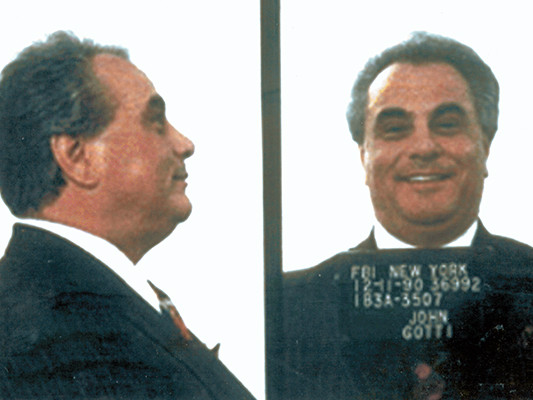John Gotti, infamous head of the Gambino crime family and once celebrated as the “Teflon Don” for his ability to evade convictions, ultimately met his demise not in a hail of bullets or a dramatic mob showdown, but in a far more mundane setting: a prison hospital. His death marked the end of an era for organized crime and solidified his legacy as one of the most notorious figures in Mafia history. But How Did John Gotti Die, and what were the circumstances surrounding his final days?
Gotti’s reign as the boss of the Gambino family was characterized by both brutal efficiency and flamboyant publicity. He ascended to power in 1985 by orchestrating the assassination of his predecessor, Paul Castellano, a move that shocked the Mafia world with its brazenness. For years, Gotti basked in the limelight, earning his “Teflon Don” moniker by repeatedly beating charges in court despite his well-known criminal activities. This invincibility, however, was an illusion that would eventually shatter.
 John Gotti, also known as the Teflon Don, a powerful boss of the Gambino crime family.
John Gotti, also known as the Teflon Don, a powerful boss of the Gambino crime family.
The turning point came in the late 1980s and early 1990s as law enforcement agencies, particularly the FBI, intensified their efforts against Gotti and his associates. Crucially, they managed to bug the Ravenite Social Club, Gotti’s headquarters, gathering crucial evidence through wiretaps. In 1990, a raid on the Ravenite led to Gotti’s arrest alongside key figures like Sammy “The Bull” Gravano.
Charged with a litany of offenses including racketeering and multiple murders, Gotti faced a trial in 1992 that would be unlike his previous legal battles. The evidence was overwhelming, bolstered by the incriminating tapes from the Ravenite. Adding to Gotti’s woes, Sammy Gravano, his trusted underboss, turned government witness, offering damning testimony against his former boss. This betrayal, coupled with the airtight evidence, finally stripped away Gotti’s Teflon coating. He was convicted in 1992 and sentenced to life imprisonment, effectively ending his reign and public persona.
It was during his time in prison that John Gotti’s health began to decline. In 1998, he was diagnosed with throat cancer while incarcerated at the United States Penitentiary, Marion in Illinois. Initially, he underwent treatment, and there was a period of remission. However, the cancer returned, more aggressively this time.
As his condition worsened, Gotti was transferred to the United States Medical Center for Federal Prisoners in Springfield, Missouri. This facility specializes in providing medical care for inmates. It was here, far from the streets of New York and the glare of the media, that John Gotti spent his final days battling cancer.
Ultimately, John Gotti died on June 10, 2002, at the age of 61, in the medical center in Springfield, Missouri, due to complications from throat cancer. His death certificate officially listed pharyngeal cancer as the cause. The once formidable “Teflon Don,” who had evaded justice for so long, succumbed to a disease, a starkly human end for a man who had cultivated an image of invincibility.
Following his death, Gotti’s legacy remained complex. While seen by some as a charismatic anti-hero, the reality was that he was a ruthless criminal responsible for numerous violent acts. His death marked a significant moment in the history of organized crime, symbolizing the decline of the old-style Mafia and the changing landscape of law enforcement’s fight against it. His son, John Gotti III, and brother Peter Gotti, both followed him into the family business, but neither could replicate his power or notoriety, further underscoring the end of an era that John Gotti had so dramatically defined.
